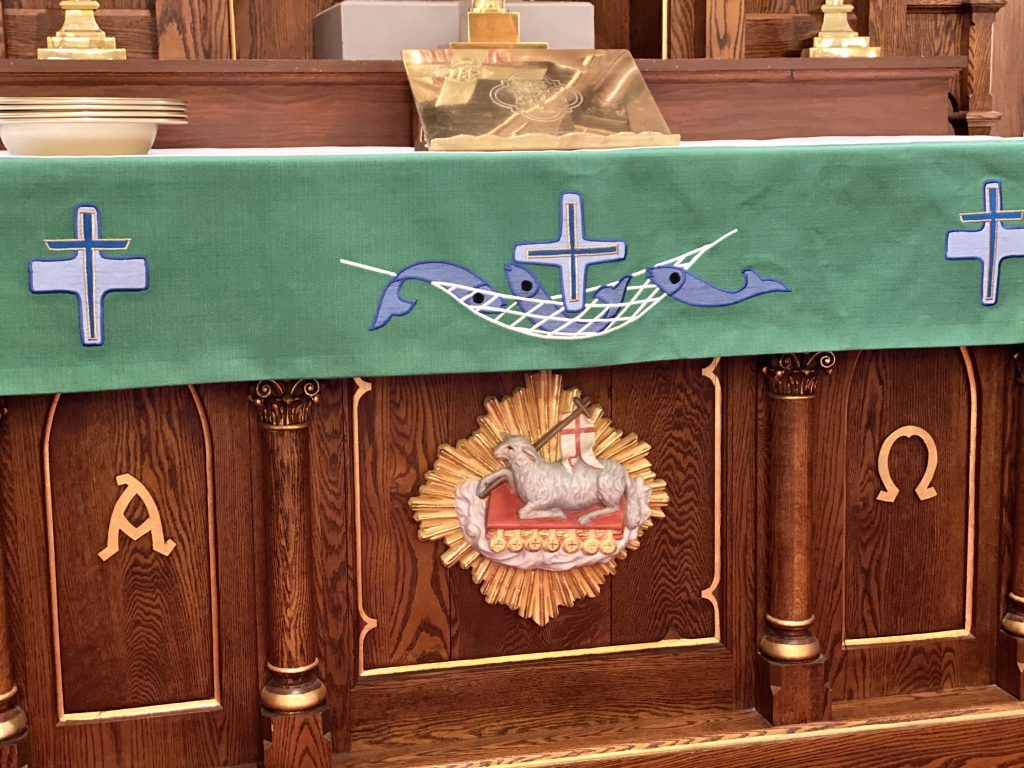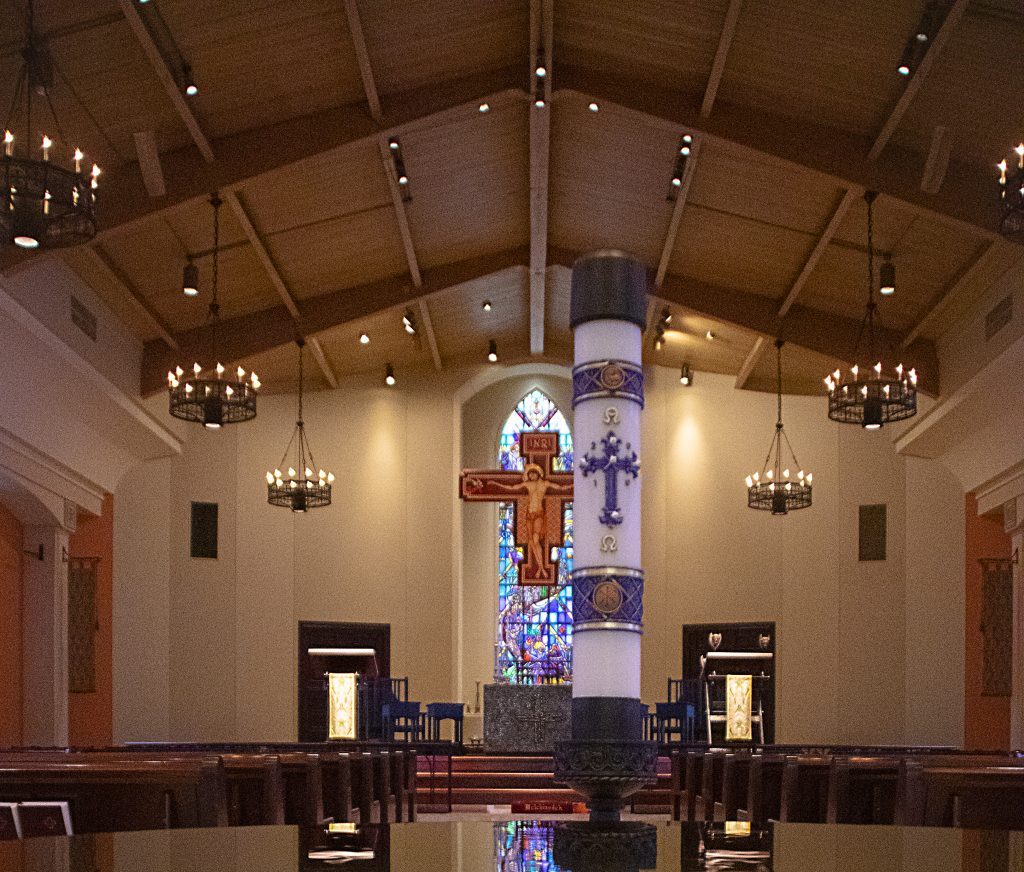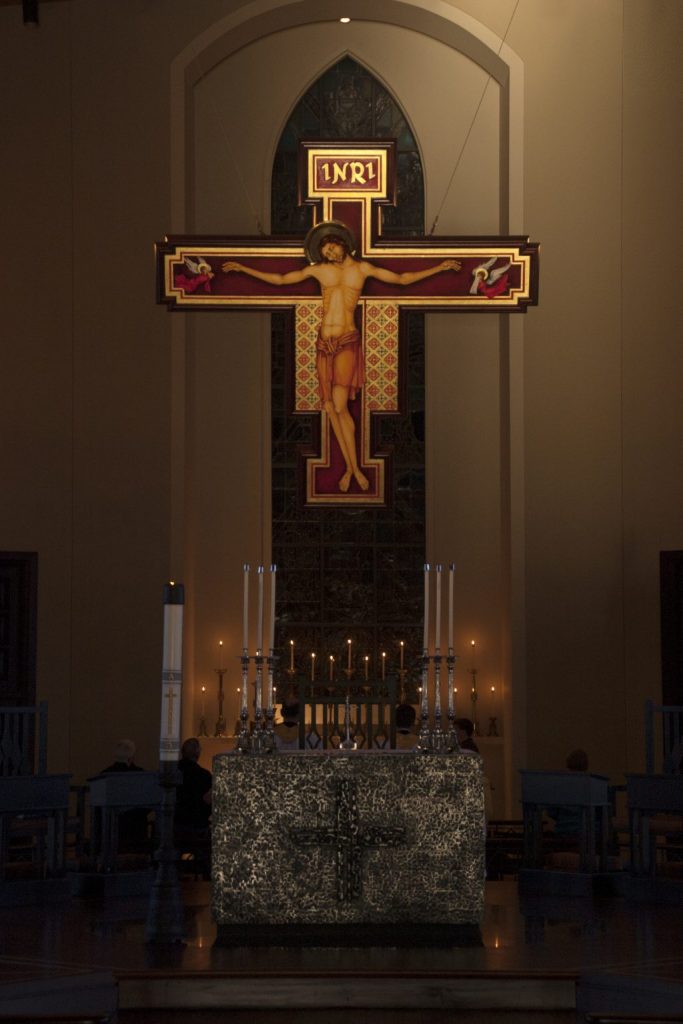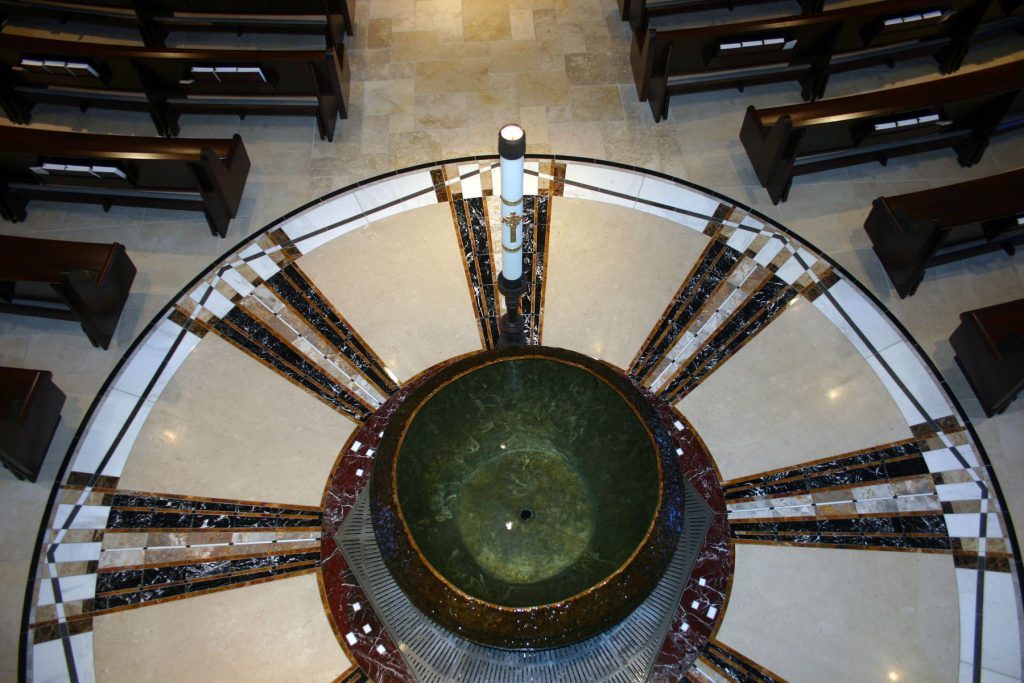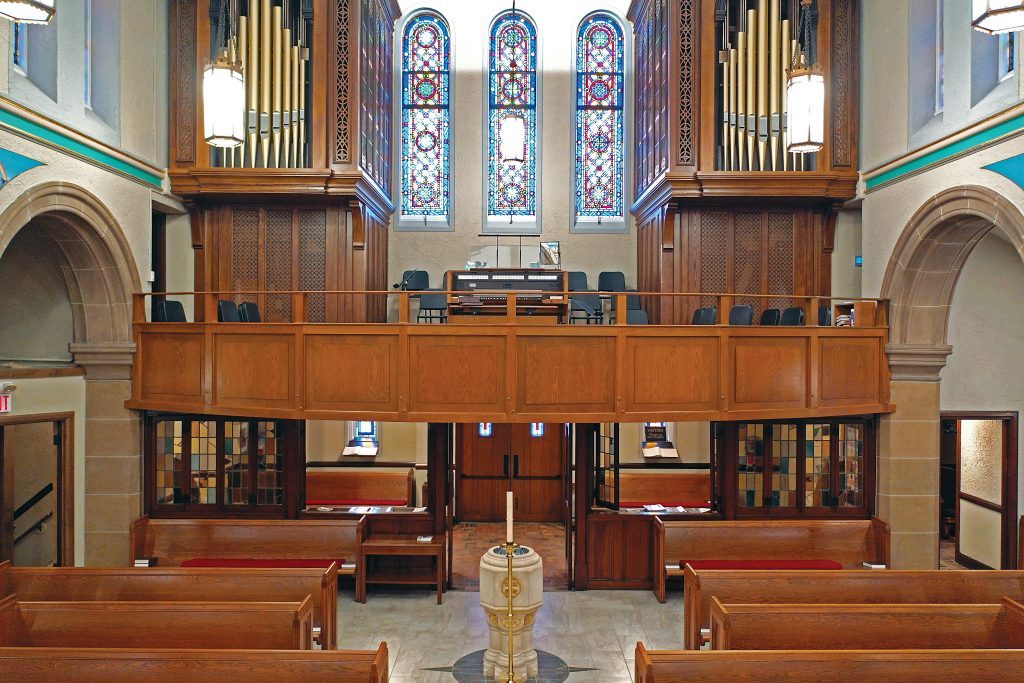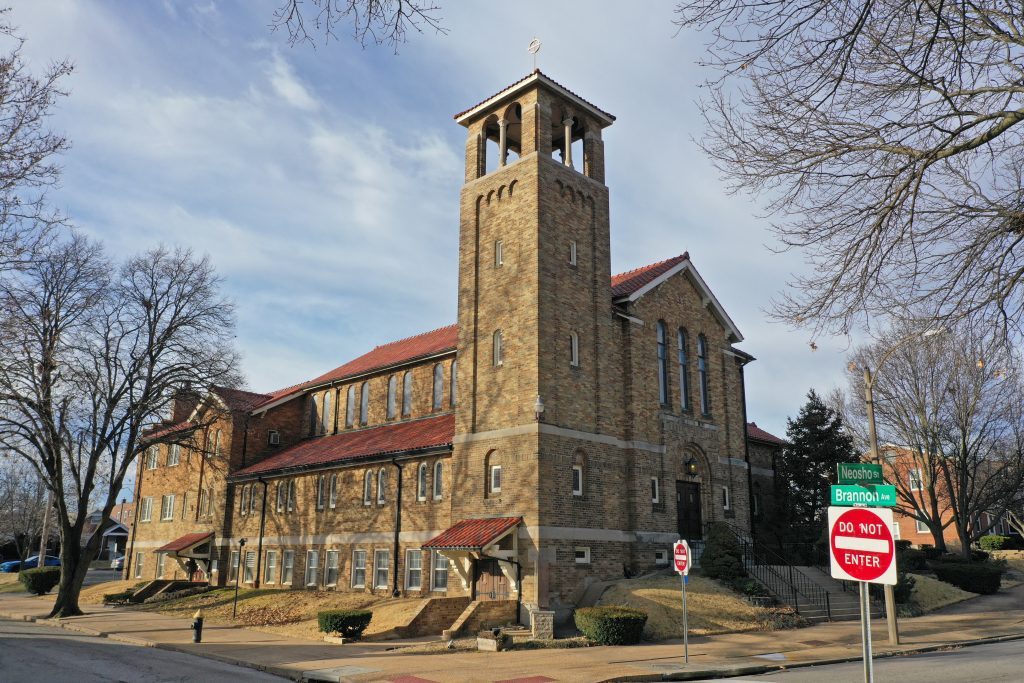How Architecture Serves the Lutheran Church
Share

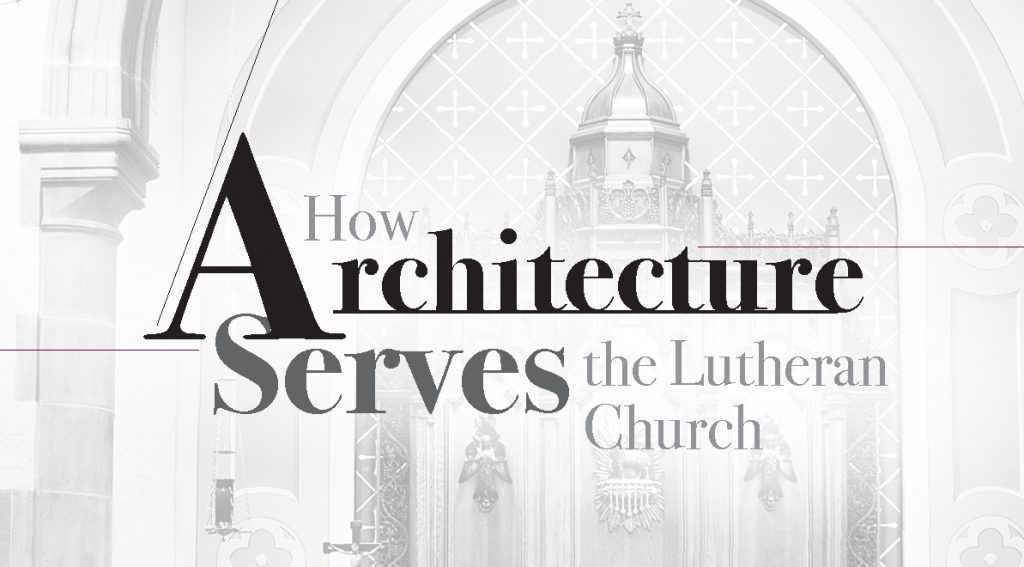
Built on the Rock the Church shall stand / Even when steeples are falling. (LSB 645:1)
Recently installed Rev. M. Douglas Peters of Trinity Lutheran Church in Milwaukee serves a congregation that knows a thing or two about falling steeples.
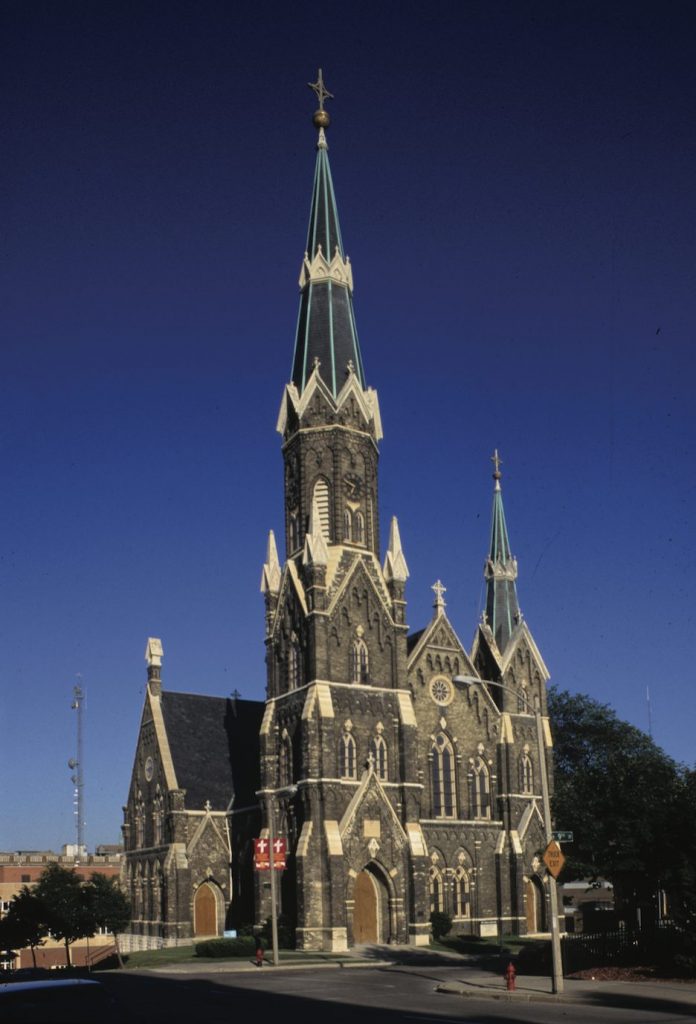
On May 15, 2018, at roughly 3:30 in the afternoon, a fire swept through the historic church. The congregation was “in shock and devastated,” said Peters, “as all the memories, the history of the church, seemed to go up in flames with the virgin timber that made up the roofing system.”
The brick exterior walls, main flooring, chalice-shaped pulpit, baptismal shell sounding board, intricately crafted altar and reredos survived, but all are in need of restoration. Practically everything else—the pews, the historic Schulke organ, a portion of the organ balcony, the church kitchen, classrooms, fellowship hall, chapel and roof—was destroyed.
With the task of rebuilding before them, Trinity found itself in the same position as so many other churches facing renovation or restoration, asking, ‘Is there anything special we should do to make sure that our church’s architecture best serves the Gospel?’
Photos of St. John Lutheran Church courtesy of Anna Piro Design.
Looking back to where art and architecture in Lutheran churches began might help guide the Church of today in making these decisions.
Architectural beginnings
Early Lutheran churches in the 16th and 17th centuries were often reclaimed Roman Catholic spaces. They were fairly simple to adapt because of the focus on liturgy, Word and Sacrament that Catholics and Lutherans share.
“In times past, church architecture was very formal in layout for liturgical churches, often driven by Lutherans taking over a previous church,” explained Rick Lueb, advisory architect for Lutheran Church Extension Fund (LCEF).
The Lutheran impulse is the same today. It is “to gather the community of the faithful in proximity to Word and Sacrament and provide an environment for their song of response to God’s gifts of grace,” said Rev. James Wetzstein, liturgical design advisor for LCEF.
Of course, Lutherans aren’t confined to only renovating churches that were once Roman Catholic. They can build new structures from the ground up, take over Reformed churches or purchase and convert storefronts. But as this all takes place, where is church art and architecture heading, and how can new churches be constructed and decorated in a truly Lutheran way?
What makes a church Lutheran?
According to Lueb, Lutheran churches come in all shapes, sizes and styles, but it’s the means of grace—namely Baptism and the Lord’s Supper—that are central in the design of Lutheran churches, even when those churches aren’t akin to towering cathedrals.
“I think folks sometimes are misled by style when they’re evaluating spaces,” Wetzstein said. “I don’t think that Neo-gothic or Baroque structures are the only thing that’s Lutheran. Rather, it’s something that is for gathering around Word and Sacrament.”
“Sacramental Christians, like Lutherans, view the Sunday event as primarily an encounter with the risen Christ, who is present in the Lord’s Supper. So, the communion table, the altar, the baptismal font and the pulpit are prominent. There is priority on the places where the means of grace are distributed. Likewise, the primary agenda of a Lutheran sermon is to proclaim a living Christ to the community.”
When Trinity in Milwaukee had to make decisions about their space, they found themselves continuously coming back to that Lutheran emphasis on Word and Sacrament.
“What makes for a distinctly Lutheran church is one where the structure directs our eyes and ears to Jesus,” said Peters, “specifically through His means of grace, His Word and Sacraments. The beauty found throughout the structure in its intricate woodworking and exquisite stained-glass windows … are meant to direct you to the font, the altar and the pulpit where the gifts of Christ are distributed.”
Below: Images of St. John Lutheran Church, Wheaton, Ill. Photos courtesy of Anna Piro Design.
How to Lutheranize a new space
St. John Lutheran Church, in Wheaton, Ill., had good reasons to build a new space. It was the rapid growth of the church that prompted St. John to purchase and renovate a non-denominational church building across the street from their current one. This new building would solve the problem of space constraints, but now the church had the task of “Lutheranizing” the new space.
“For many reasons—sentimental, financial and theological—the project was frightening and exhilarating and exhausting and inspiring all at once,” said Rev. Scott Bruzek, senior pastor at St. John.
Still, the church’s new campus is stunning and unequivocally Lutheran, with a central focus on the means of grace.
“The beauty of art and architecture envelops those who enter our sanctuary,” Bruzek said.
“Our nave makes clear that the holy things are most important—a large font splitting the center aisle near the door, kneelers for laity and clergy, a lectern embellished with the classic images of the four Evangelists and a substantial altar over which hangs an icon of the crucifixion.
“Even if you enter and don’t know about the faith, by the time you settle in, it becomes explicit that we orbit Christ and His gifts of Baptism, Absolution, Scripture and the Lord’s Supper. These things pointing to Christ alone define our space as distinctly Lutheran.”
“These things pointing to Christ alone define our space as distinctly Lutheran.” – REV. SCOTT BRUZEK | SENIOR PASTOR, ST. JOHN LUTHERAN CHURCH | WHEATON, ILL.
Designed for the purpose
Another consideration for churches is often functionality. Does the church building physically do for the people what it needs to do? Wetzstein feels that this question is vital.
“Folks who are making decisions around building and renovation projects should ask, ‘Do we want a building that works with us or against us?’” he said. “To not think this way is [like saying], ‘I’m going to build a Victorian home and keep the kitchen in the back where it was placed when all cooking was done by hired servants, but I’m going to have my friends over all the time and we’re going to cook together.’
“There’s a reason why more contemporary homes have open-space kitchens: because everyone ends up there anyway, so we might as well design for that. Churches design for the things that are happening when they design for the Lord’s Supper.”
This is precisely what happened for Hope Lutheran Church in St. Louis, a church that recently consulted with LCEF on a major organ and sanctuary renovation. Wetzstein was the consultant.
Form follows function and faith
“Hope in St. Louis asked, ‘How can we make the space work better for what we want, which is a space that supports music, because, for Lutherans, music is significant,’” Wetzstein said.
The two-phase project—renovating the organ and updating the sanctuary—began while planning for the church’s 100th anniversary in 2016. During that time, the congregation considered their “beautiful building and heritage and what [they] might want to leave for the next generation,” explained Rev. Randy Asburry, pastor at Hope.
Because music was so important to the congregation, they took up the carpeting from the floor to provide a better environment for the organ’s sound. They also brightened the space to make it lighter, added some new décor and tied it all together with a “new creation” theme that was inspired by their existing stained glass windows.
“We wanted the building to speak and say something,” Asburry said. “Form follows function and also, as Christians, confession of faith. We’re here for proclaiming the Gospel. We want the organ to sing clearly, and the space to proclaim the Gospel.”
Clever beauty
While churches make thoughtful, Christ-centered decisions, they also take into account the needs and feelings of the particular congregation that will worship in the space week-in and week-out. “Some very good folks were worried that our new sanctuary would feel too large and impersonal because it had seats for twice as many people,” explained Bruzek. He took those concerns seriously.
“What makes for a distinctly Lutheran church is one where the structure directs our eyes and ears to Jesus…” – REV. M. DOUGLAS PETERS | SENIOR PASTOR, TRINITY LUTHERAN CHURCH | MILWAUKEE, WIS.
Below: Images of Hope Lutheran Church in St. Louis, Mo.
“We curved the pews and wrapped them most of the way around the altar,” he said. “This not only gave the congregation a sense of embrace, as if they were being pulled toward the altar, but it also meant that the distance between the new altar and the last seat in the back of the new nave was precisely the same as the distance in the old nave. Clever beauty meant nobody was left feeling distant or disregarded even though the seating space had doubled.”
Everything teaches
For Hope Lutheran, having helpful experts within The Lutheran Church—Missouri Synod (LCMS) smoothed out the renovation process and helped them plan for the very best space that would serve generations of Lutherans to come.
“If at all possible,” explained Asburry, “churches should choose to work with … someone who gets the life of the church. An architect can’t just come in and do things like they would in an office building. It’s a church.”
With help like that available, congregations can’t help but build well, so that their churches proclaim Christ in all the very best ways. According to Bruzek, that means taking care to put the very best into each design decision, no matter how small.
“Everything matters because everything teaches,” said Bruzek, “so put all you’ve got into the task. We are always communicating, even when we aren’t saying anything—and so in this way, our building speaks for us. Let the building speak of Christ as best you can.”
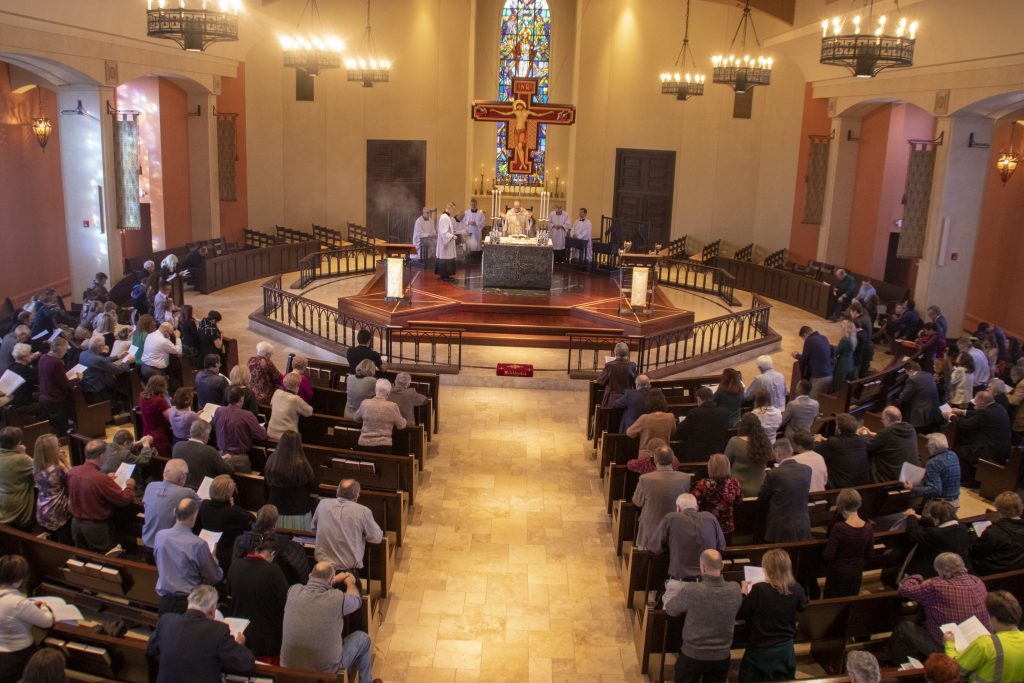
Embracing Lutheran art and architecture
Knowing fully where the Lutheran Church has been and where it’s going, even architecturally speaking, there is great beauty and joy as we build and update our churches to the glory of God.
“The Church is the people of God, given faith in the Gospel, baptized by God, given the Supper, but yes, we need a place to meet for all this stuff,” Asburry said.
“When planning a renovation, we should take our time, plan things out and talk things through. Ask, ‘What do we want the church to say?’ It’s worthwhile because we’re proclaiming God’s Word and salvation in Jesus Christ. Think of all the care put into the tabernacle and the temple—there were purple linens, gold.”
“Rarely in life do we aspire to the bare minimum,” Bruzek said. “Not in healthcare, sports, work, homes, relationships, vacations, cars, education, or family life—and especially not in the Church. To our Lord, we always bring our best, which is a prayerful reflection of divine love, happy obedience and spiritual maturity. Once we embrace all the good that beauty can do through music, art and architecture, then buildings which point and speak to the glory and mercy of God are well worth it. Our lives—and our life together—are meant to be a witness to Jesus Christ, who gives Himself for the life of the world. Art and architecture are glorious ways to deliver that message, sometimes in ways that words may not.”
To view more images of Lutheran architecture, visit interesttime.org/ArtArch.


